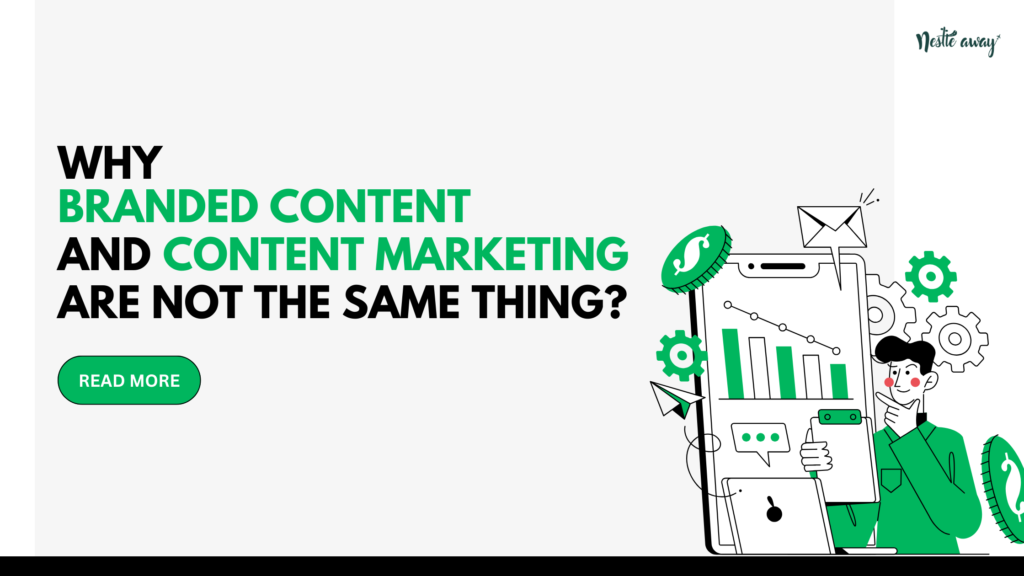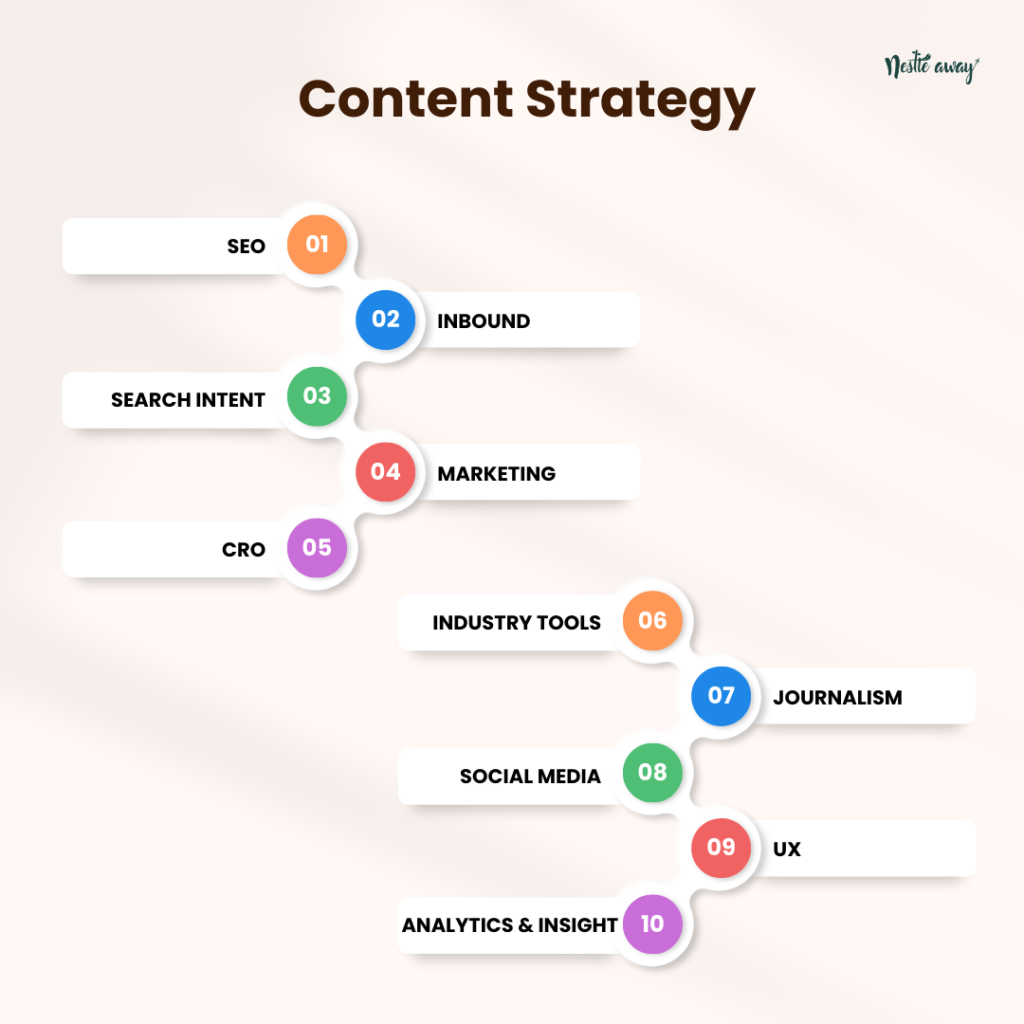Why Branded Content and Content Marketing are not the same thing ?

Starting a blog can be an exciting and challenging journey. One of the most popular approaches in digital marketing today is content-based marketing. This strategy aims to create valuable, informative, and engaging content that resonates with your target audience and drives traffic to your website.
Content marketing has risen in popularity in recent years because consumers are becoming increasingly resistant to traditional advertising methods. Instead of bombarding potential customers with ads and sales pitches, content-based marketing builds trust and authority by providing useful information and solving problems.
It’s crucial to differentiate between branded content and content marketing because they serve different purposes. Branded content is typically created to promote a specific product or service, while content marketing is designed to build a relationship with your audience and establish your brand as an authority in your industry.
By creating valuable content that resonates with your target audience, you can establish your brand as a thought leader and build trust with your customers. This can lead to increased engagement, brand loyalty, and ultimately, more sales. So if you’re considering starting a blog, content-based marketing is definitely worth exploring.
Understanding Key Terms in Content-Based Marketing
What is Branded Content?
Branded content is a type of marketing strategy that focuses on creating content that promotes a specific brand or product. The main goal of branded content is to increase brand awareness and drive sales by creating a connection between the brand and the target audience.
The key difference between branded content and other types of advertising is that branded content is often more subtle and less promotional. Instead of directly promoting a product or service, branded content aims to tell a story or provide entertainment or education to the audience.
Real-life examples of branded content include Coca-Cola’s “Share a Coke” campaign, where personalized bottles were created with individual names, and Red Bull’s “Stratos” campaign, where a skydiver broke the world record for the highest jump.
What Qualifies Under The General Umbrella of Content Marketing?
Content marketing is a marketing strategy that focuses on creating valuable, informative, and engaging content to attract and retain a target audience. The goal of content marketing is to establish the brand as a thought leader in the industry and build trust and authority with the audience.
Content marketing aims to provide useful information to the audience, rather than directly promoting a product or service. By creating high-quality content that resonates with the audience, content marketing can lead to increased engagement, brand loyalty, and ultimately, more sales.
Real-life examples of content marketing include HubSpot’s blog, which provides marketing, sales, and customer service advice, and Nike’s “Nike Training Club” app, which provides workout routines and fitness tips.

Featured Characteristics of Branded Content and Content Marketing
Essential Elements of Brand-Centric Content
- Storytelling Focus – Branded content typically centres around a story aimed at connecting with the audience emotionally. For example, a cosmetics brand might create a video series featuring women sharing their personal stories of self-confidence and empowerment.
- Emotional Engagement – Branded content aims to create an emotional connection with the audience, whether it’s through humour, nostalgia, or other emotions. For instance, a fast-food chain might launch a social media campaign featuring heartwarming stories of customers’ experiences at their restaurants.
- Often not directly sales-focused – Branded content doesn’t always aim to sell a product or service directly. Instead, it focuses on building brand awareness and fostering a positive image. For example, a sports apparel brand might sponsor an athlete’s training program. This showcases their commitment to fitness and athleticism.
- Platform-specific – Branded content is tailored to the platform on which it appears, whether it’s social media, TV, or another medium. Consider a car company that wants to create short, attention-grabbing videos for Instagram. However, it’ll still opt for longer videos, which pose as detailed ads on TV.
Hallmarks of Effective Content Marketing
- Broad Spectrum – Content marketing covers a wide range of content types, including blog posts, videos, infographics, and more. This diversity allows brands to reach a wider audience and appeal to different interests. For example, a financial services company might create blog posts on budgeting, videos on investment strategies, and infographics on financial trends.
- Direct Business Goals – Unlike branded content, content marketing has a more direct connection to a company’s business goals. A software company might create a white paper on how their product can improve workplace efficiency as a way to generate leads and drive sales.
- Ongoing Strategy – Content marketing is an ongoing strategy, with brands consistently creating and sharing content to engage with their audience. This approach helps build brand loyalty and establishes a company as a thought leader in their industry. A healthcare company would focus on regularly publishing articles on the latest medical research, positioning themselves as experts in the field.
- Educational or Value-Driven – Content marketing often focuses on providing educational or value-driven content to the audience, rather than overtly promoting a product or service. In the case of a home improvement retailer, it might be better to create how-to videos on DIY projects, providing value to their audience. Meanwhile, it’ll promote its products subtly.
In conclusion, branded content and content marketing are two different marketing strategies that aim to achieve different goals. While branded content focuses on promoting a specific product or service, content marketing aims to establish the brand as a thought leader in the industry and build trust and authority with the audience. When executed correctly, both strategies can be effective in driving sales and building brand awareness.
What Are The Key Differences Between Branded Content and Content Marketing?
Branded content and content marketing may seem similar, but the two strategies have several core contrasts. Here’s a quick overview of the primary distinctions:
- Storytelling Focus: Branded content centres around a story aimed at connecting with the audience emotionally, while content marketing can cover a broad spectrum of content types.
- Emotional Engagement: Branded content aims to create an emotional connection with the audience, while content marketing often focuses on providing educational or value-driven content.
- Direct Business Goals: Content marketing has a more direct connection to a company’s business goals, with a focus on generating leads and driving sales.
- Ongoing Strategy: Content marketing is an ongoing strategy, with brands consistently creating and sharing content to engage with their audience, while branded content may be more focused on a one-time campaign.

When Should You Use Branded Content And Content Marketing?
Determining whether to use branded content or content marketing depends on several factors, including your goals, target audience, budget, and distribution platform. Here are some key considerations to keep in mind:
Goal Determination: Understanding your objectives is crucial in deciding which strategy to use. If your goal is to generate leads and drive sales, content marketing might be the better option. On the other hand, if you aim to create a strong emotional connection with your audience, branded content may be more effective.
Audience Considerations: Consider what your target audience prefers or expects. If your audience is more receptive to educational or informative content, content marketing may be the way to go. But if your audience responds better to emotionally driven stories, branded content may be the better choice.
Budget and Resources: Different methods may require varying levels of resources or investment. If budget is a concern, content marketing may be more cost-effective. However, if you have the resources to create high-quality, visually stunning branded content, it could have a greater impact.
Platform or Channel: The platform or channel on which your content will be distributed can also affect your decision. Branded content is often tailored to the specific platform, while content marketing can be more flexible in terms of distribution. Consider which platform or channel is best suited for your chosen strategy.
Ultimately, both branded content and content marketing can be effective approaches, but understanding the differences and considering these key factors can help you determine which strategy is best for your brand and objectives.
The Fusion of Branded Narratives and Marketing Content

Blending branded content and content marketing can offer numerous benefits for your brand, such as increased audience engagement, improved brand awareness, and higher conversions. By combining the emotional storytelling of branded content with the educational value of content marketing, you can create a comprehensive strategy that resonates with your audience.
Several brands have successfully merged these two approaches to create impactful campaigns. For example, Airbnb’s “We Are Here” campaign featured a series of videos showcasing the unique stories of the hosts and guests who use the platform. The videos were emotionally driven but also highlighted the practical benefits of using Airbnb for travel.
Another example is Coca-Cola’s “Taste the Feeling” campaign, which focused on the emotional experience of drinking Coke. The campaign included a mix of visually stunning branded content and educational content focused on the history and production of the beverage.
By merging branded content and content marketing together in creative ways, you can create a cohesive strategy that engages your audience and achieves your goals. Integrating branded content and content marketing can offer numerous benefits for your brand, such as increased audience engagement, improved brand awareness, and higher conversions. By combining the emotional storytelling of branded content with the educational value of content marketing, you can create a comprehensive strategy that resonates with your audience.
Embark On Your Specific Content Journey With NestleAway
It’s essential to grasp the differences between branded content and content marketing. For businesses aiming to maximize their impact, it’s vital to analyze your content goals and choose the approach that aligns best with them. By doing so, you not only position your brand effectively but also ensure that your content resonates with your target audience.
We’d love to hear from you! Share your experiences with branded content and content marketing in the comments below. If you’re looking to dive deeper into crafting the right content strategy, get in touch for personalized guidance from Nestle Away. Besides, check out our additional resources. Your voice and journey matter, so let’s grow and learn together!